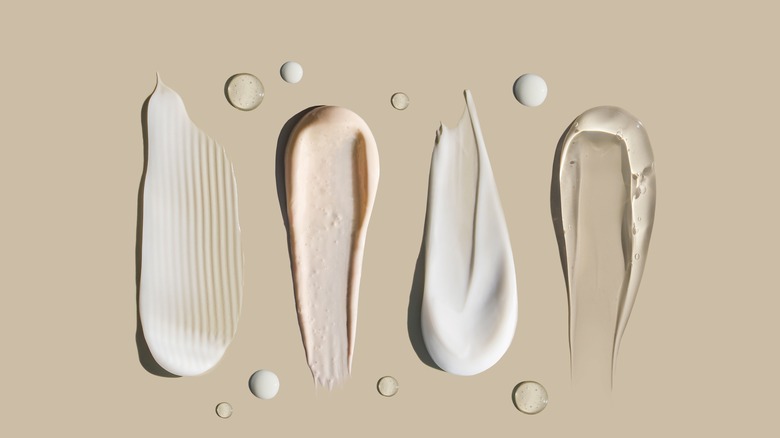Confused About What Combination Skin Means? Let Us Clarify
It has never been easier to curate a skincare routine. With a single scroll on your TikTok or Instagram feed, you're quickly bombarded with content that tells you which products work best for your skin type and which ones you should veer away from. The internet offers a treasure trove of resources on how to take good care of your skin — but before you fill your Sephora cart with all sorts of new products, it's worth double-checking what your skin type even is in the first place.
No two skins are the same, but they typically fall under five main types: oily, dry, normal, sensitive, and combination. Oily and dry skin are pretty much self-explanatory, while sensitive skin pertains to skin that is prone to irritation and inflammation due to a number of external factors, including heat, chemicals, pollution, and even food. Meanwhile, combination skin is exactly what it sounds like. It deals with a "combination" of oiliness and dryness on different parts of your face. For instance, you can have an oily T-zone but have dry cheeks, or vice versa.
Out of all the skin types, combination skin is tougher to maintain because it doesn't deal with just a single skin concern. Your routine should hinge on the unique needs of your skin, and that means tackling multiple concerns simultaneously.
How to know if you have combination skin
Since pretty much everyone has dealt with both oiliness and dryness in one way or another, the process of figuring out whether you have combination skin or not can be confusing. But facialist Boldijarre Koronczay told Cosmopolitan that there's a lesser-known trick that you can do to determine if you indeed have combination skin, and that's to apply oil film to both your T-zone and cheeks. "If your forehead, nose and/or chin are generally oilier and your cheeks tend to be dry then you have combination skin," he noted. If acne and blemishes also manifest more on your T-zone compared to the rest of your face, that's also a telltale sign.
You can also try the sunblock test, which involves putting sunscreen all over your face and checking which parts have absorbed the product the most. If your cheek area gobbled up the sunscreen but your T-zone ended up looking shinier than usual, then it may be a sign that you have combination skin, since that area generates more oil than the rest of your face. The weather, as it turns out, is a great indicator, too. "Combination skin tends to become more noticeable during certain times of year with more extreme temperatures, like summer or winter," celebrity esthetician Lisa Guidi shared with Mbglifestyle. "You'll notice that certain areas of skin are more dry while other areas simultaneously are more oily."
How to take care of combination skin
In theory, combination skin is the hardest skin type to tackle because it means having to address oiliness and dryness in one fell swoop, but the secret to building a routine for it is finding a balance. You'd want to make sure that both the oily and dry parts of your skin receive the same amount of TLC. When cleansing, dermatologist Dr. Lisa Byrom pointed out to Refinery29 that it's best to go for products that provide a "gentle wash" so as not to make the dry parts of the skin even drier. A lightweight moisturizer that is gel-based or comes in a form of a lotion is ideal because it "can be layered with moisture-holding ingredients like topical hyaluronic acid on the dry skin areas."
You can also opt for using different products on different parts of your face. You can go about your normal skin routine on the dry parts and use supplementary products on the oilier areas. If the weather is extra harsh, Dr. Tiffany Jow Libby, a dermatologist, recommends using heavier moisturizers to hydrate the skin. "Applying heavier creams is fine for the face," she told Real Simple. "The dry areas on combination skin will tolerate creams well and often need that extra level of moisture to keep skin balanced."
Now when it comes to exfoliation, the key is to avoid overdoing it. If your skin can tolerate it, try using glycolic acid to address concerns involving texture, but if your skin is more sensitive, lactic acid may suit you better. Just be sure to exfoliate only a few times a week, and perhaps supplement it with hydrating products to maintain moisture.


